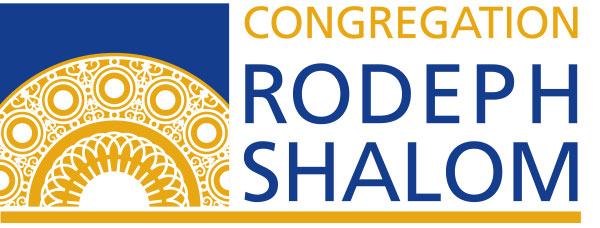By Rabbi William I. Kuhn
Our Friday night Summer Casual Services are off to a great start. These are one hour services, casual dress, fun atmosphere, great discussion topics, lots of RS members as well as lots of prospective members.
Our discussion topics for this summer are taken from the book, Your Word Is Fire, by Arthur Green and Barry Holtz. We study a brief poem that captures the essence of some of the Hasidic masters’ contemplations on prayer, and then we discuss its meaning in the context of our own Rodeph Shalom prayer service.
This past Friday night, Rabbi Maderer led a lively discussion on what Hasidism is, and what it can mean to us. The Hasidic movement arose in Poland and the Ukraine toward the end of the 18th century, as a reaction to the prevailing prayer methods and customs in the Jewish community. The leaders of the community at that time were the mitnagdim, who followed a rigorous, intellectual approach to Judaism, with study and punctilious dedication to the correct details of prayer as their methodology. Many Jews believed that this form of prayer and of practice was becoming stale and joyless.
It was out of this atmosphere that Hasidism evolved, as their new leader, the Ba’al Shem Tov, emphasized the joy and happiness and spirituality of prayer, with lots of singing, dancing and uplifting prayer services.
What does this mean to us today? Many Reform Jews are seeking a more joyous form of prayer within our own tradition. Reform Judaism arose during the “Age of Reason” when everything needed to make rational, intellectual sense. Our prayer books eliminated most of the spiritual, emotional and non-rational aspects of Jewish tradition. We stressed decorum and dignity, and we listened quietly while a choir sang to us. It was forbidden for Reform Jews to participate in services, except during the responsive reading.
In recent years, prayer services in the Reform movement have reflected a desire and a hunger to return to a more joyous and spiritual form of atmosphere. We have begun to understand why the Hasidic movement evolved out of the overly serious, , rote and mechanical form of prayer. Our services are beginning to feel joyous, upbeat, warm, inclusive, participatory and informal. Dare I say, our services are beginning to be FUN!
Can a prayer service be fun in a Reform Jewish congregation? Are we being sacrilegious by singing along and sometimes clapping with the music? Can we really pray with guitar music? Are Reform Jews allowed to smile during services?
